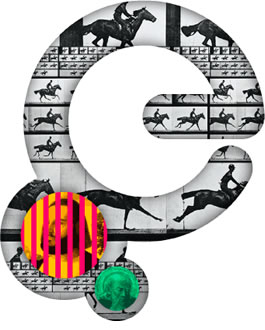
What will be Europeana? A digital portal, a universalizing library, a gateway to Europe’s largest archives? Recently I visited Europeana’s office in Den Haag, at the Koninklijke Bibliotheek, to ask for definitions from the source. Europeana is perhaps set to become Europe’s uber-aggregator of digital culture, a centralized, catholic platform that links through to millions of objects, from postage stamps to Vermeers to old newsreels, organizing the convergence of once-disparate domains for the internet era. The site connects hundreds of content providers and digital archives across Europe and is set to showcase up to 10 million objects by 2011.
Europeana itself doesn’t digitize or host any content; instead it trades in resource discovery. “A traditional archive would have analogue material and cater to a limited and professional audiences who would come to the physical building knowing what they wanted,” said Harry Verwayen, Europeana’s director of Business Development. “With digitization, the veritable costs of distribution have gone to zero, so you reach new audiences.” Currently the funding for the project comes from the European Union.
Vanessa Proudman, Europeana’s General Project Manager explained that to amass this collection, the content, say digitized reels of WWII documentation, usually comes from a local or national archive such as the Dutch Film Museum, who passes it through a middle-tier aggregator of specific formats, for instance the European Film Gateway, which then delivers these along with media from several other film archives in digital formats that can be ingested by Europeana. The bottleneck typically happens as aggregators work to tailor their collective institutions’ bibliographic data to Europeana’s specific data model. Once the synchronicity occurs, objects become a visible part of the Europeana network. In a future update of the platform, users will be able to add to the mix as well, adding annotations and tags.
The sum total of these collections is larger than its parts, as Europeana builds an enormous archive of the archive, in the form of metadata for each individual item contained within. Bibliographic metadata is key – it harmonizes links between the partner databases and also provides essential descriptive and contextualizing information about the objects’ provenance (or origin). But even more than this, metadata is set to become Europeana’s other primary service. If content providers agree to license full re-use rights, Europeana will release this information into the public domain, where it can accumulate semantic enrichment that, they hope, feeds back to the original providers. The archive becomes a collective, dynamic project.
“It’s a virtuous circle,” Verwayen explained. “This is cultural and historical material, and there’s an obvious need for enriching it with geo-data and time elements. You could for instance walk around with a mobile phone and ipad throughout a city or museum, look up information about what you’re seeing, add back to it, such as GPS coordinates from another database, and look at it evolve over time.” They hope to release open semantic data next year through a search API – a move that the New York Times also recently made – and eventually link it with Wikipedia and DBpedia. These steps could positively change the cultural sector’s attitude towards opening linked data for public reuse and research, and, since databases in Europe fall under copyright law, operate as a catalyst for database licensing reform in general.
Context becomes the new content, and like other web 2.0 platforms such as flickr or facbeook, value-creating services may provide Europeana with a future business model. Since it has no repository of its own, “you have to be able to make money around services, and the service could be enriching the metadata. If we open it up to commercial providers and get money for it, part of the money could flow back to the Victorian Albert Museum, for instance.” But very much unlike commercial platforms, Europeana’s data would be open to everyone else for non-commercial use – anyone could harvest it into another website, or create mash-ups with other information.
Perhaps most importantly, Europeana aims to build a living, breathing digital commons. “Europe needs an independent non-exclusive space that supports the digital public domain,” Verwayen told me. “We call it a portal. It’s a new possibility to organize data outside silos. We’re not a museum, we have more than paintings. We’re not a library, we have more than books. Archives have the connotations that they are a vault or a walled garden. This is discovering content and connecting different media related to one topic, and getting communities to talk to one another and address issues together.” The Europeana commons is so much more than a repository – it’s set to become a space for creative, hybrid production, the archive as a potent, creative tool.

